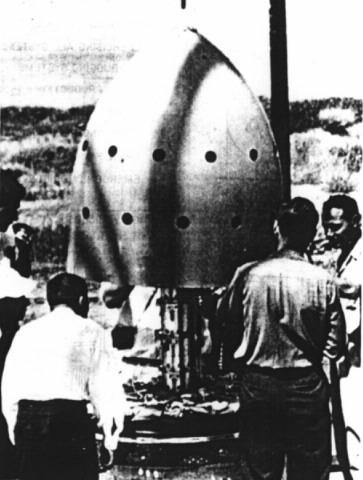Nuclear spaceships aren’t a new proposition. In the late 1950s, a group of American scientists, including Freeman Dyson, worked on Project Orion, a plan to boom us to Mars by 1965 and Saturn by 1970. It didn’t seem outlandish scientifically, but the work had to be scrapped after the signing of the Limited Test Ban Treaty in 1963, which forbid nuclear-powered space exploration.
Of course, a rogue state with enough knowledge and money could still go for it, and Russia, unsurprisingly, is interested in being that nation. The former Soviet Union long worked on their own nuke-space schemes, and the interest has reawakened. From Nick Stockton at Wired:
The engines the Soviets and Americans were developing during the Space Race, on the other hand, had at least double a chemical rocket’s specific impulse. Modern versions could likely do even better. Which means spaceships would be able to carry a lot more fuel, and therefore fire their thrusters for a longer portion of the trip to Mars (bonus: artificial gravity!). Even better, a thermal fission spaceship would have enough fuel to decelerate, go into Martian orbit, and even return to Earth.
Calling for a fission mission to Mars is great for inspiring space dreamers, but Russia’s planned engine could have practical, near-term applications. Satellites need to fire their thrusters every so often to stay in their ideal orbits (Also, to keep from crashing to Earth). Sokov thinks the main rationale for developing a nuclear thermal engine would be to allow for more of these orbital corrections, significantly increasing a satellite’s working lifespan. Fission power would also give probes more maneuverability. “One civilian application is to collect all the space junk,” says Sokov. “You are free to think of other, perhaps not as innocent applications.”
Russia may have the will to go nuclear, but it probably lacks the means.•
_____________________________
“First time we tried it, the thing took off like a bat out of hell.”
Tags: Nick Stockton

